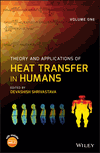Whole-Body Human Computational Models and the Effect of Clothing
Summary
This chapter discusses realistic evaluation of human behavior in terms of the thermal properties of protective garments. They focus attention on protective garments worn by firefighters, who represent an extreme case of exposure to heat while wearing protective clothing. The ability of firefighters to perform required tasks is often determined by the thermal properties of their protective garments. Analytical models used for estimating the radiant flux on firefighters. Those models assume that the source of radiation is approximately a plane surface with a specified width, height, and temperature located a specified distance from the firefighter. The effect of work and environmental heat stress on a firefighter wearing a particular protective garment is reflected in changes in core and skin temperatures. An obvious way to reduce thermal strain is for firefighters to take periodic breaks. While that is not always possible, it is a useful technique when conditions allow its use.



